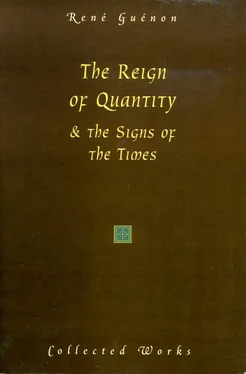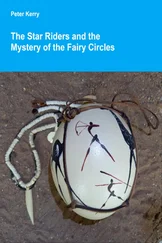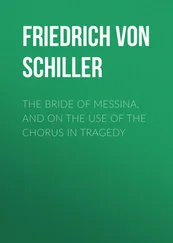22
The Significance of Metallurgy
We have seen that the arts or crafts that involve a direction of activity toward the mineral kingdom belong properly to the sedentary peoples, and that such activities were forbidden by the traditional laws of the nomadic peoples, of which the Hebrew law is the most generally known example; it is indeed evident that these arts tend toward ‘solidification’, and in the corporeal world as we know it ‘solidification’ in fact reaches its most pronounced form in minerals as such. Moreover, minerals, in their commonest form, that of stone, are principally used in the construction of stable buildings; [89] It is true that among many peoples the buildings of most ancient date were of wood, but such buildings were obviously not so durable, and consequently not so fixed, as stone buildings; the use of minerals in building thus always implies a greater degree of ‘solidity’ in every sense of the word.
a town, considered as the collectivity of the buildings of which it is made up, appears in particular as something like an artificial agglomeration of minerals; and it must be reiterated that life in towns represents a more complete sedentarism than does agricultural life, just as the mineral is more fixed and more ‘solid’ than the vegetable. But there is something more: the arts applied to minerals include metallurgy in all its forms; now the evident fact that metal tends increasingly in these days to be substituted for stone in building, just as stone was formerly substituted for wood, leads to a supposition that this change must be a symptom of a more ‘advanced’ phase in the downward movement of the cycle; and this supposition is confirmed by the fact that in a general way metal plays an ever-growing part in the ‘industrialized’ and ‘mechanized’ civilization of today, and that from a destructive point of view, if it may be so expressed, no less than from a constructive point of view, for the consumption of metal brought about by modern wars is truly prodigious.
This observation moreover is in accord with a peculiarity met with in the Hebrew tradition: from the beginning of the time when the use of stone was allowed in special cases, such as in the building of an altar, it was nevertheless specified that these stones must be ‘whole’, for ‘you shall lift up no iron tool upon them’; [90] Deut. 27:5-6.
according to the precise terms of this passage, insistence is directed not so much to the stone being unworked as to no metal being used on it: the prohibition of the use of metal was thus more especially strict in the case of anything intended to be put to a specifically ritual use. [91] Hence the continuing employment of stone knives for the rite of circumcision as well.
Traces of this prohibition still persisted even when Israel had ceased to be nomadic and had built, or caused to be built, stable edifices: when the Temple of Jerusalem was built the stone was ‘prepared at the quarry; so that neither hammer nor ax nor any tool of iron was heard in the temple, while it was being built.’ [92] 1 Kings 6:7. Nevertheless the Temple of Jerusalem held a large quantity of metallic objects, but their employment is connected with the other aspect of the symbolism of metals, which is twofold, as we shall see presently: it seems moreover that the prohibition ended by being to some extent ‘localized’, mainly against the use of iron, and iron is the very metal of all others that plays the predominant part in modern times.
There is nothing at all exceptional in this, and a mass of concordant indications of the same kind could be found: for instance, in many countries a sort of partial exclusion from the community, or at least a ‘holding aloof’, was practiced and even still is practiced so far as metal-workers are concerned, and more particularly blacksmiths, whose craft is often associated with the practice of an inferior and dangerous kind of magic, which has eventually degenerated in most cases into mere sorcery. Nevertheless, on the other side, metallurgy has been specially revered in some traditional forms, and has even served as the basis of very important initiatic organizations; it must suffice to quote in this connection the instance of the Kabiric Mysteries, without dwelling longer at this point on a very complex subject that would lead much too far afield; all that need be said for the moment is that metallurgy has both a ‘sacred’ aspect and an ‘execrated’ aspect, and that in their origin these two aspects proceed from a twofold symbolism inherent in the metals themselves.
If this is to be understood, it must be remembered in the first place that the metals, by reason of their astral correspondences, are in a certain sense the ‘planets of the lower world’; naturally therefore they must have, like the planets themselves, of which they can be said to receive and to condense the influences in the terrestrial environment, a ‘benefic’ aspect and a ‘malefic’ aspect. [93] In the Zoroastrian tradition it seems that the planets were envisaged almost exclusively as ‘malefic’; this may be the result of a point of view peculiar to that tradition, but in any case all that is known about what still remains of Zoroastrianism consists only of fragments so mutilated that it is not possible to form any exact judgment on such questions.
Furthermore, since an inferior reflection is in question, corresponding to the actual situation of the metallic mines in the interior of the earth, the ‘malefic’ aspect must readily become predominant; and it must not be forgotten that from the traditional point of view metals and metallurgy are in direct relation with the ‘subterranean fire’, the idea of which is associated in many respects with that of the ‘infernal regions’. [94] As concerns the relationship to the ‘subterranean fire’, the obvious resemblance of the name of Vulcan to that of the Biblical name Tubalcain is particularly significant: moreover they are both said to have been smiths; and while on the subject of smiths it may be added that the association of their craft with the ‘infernal regions’ sufficiently explains what was said above about its ‘sinister’ aspect. The Kabires, on the other hand, while they too were smiths, had a dual aspect both celestial and terrestrial, bringing them into relationship both with the metals and the corresponding planets.
Nonetheless, if the metallic influences are taken in their ‘benefic’ aspect by making use of them in a manner truly ‘ritual’, in the most complete sense of the word, they are susceptible of ‘transmutation’ and ‘sublimation’, and are then all the more capable of becoming a spiritual ‘support’, since whatever is at the lowest level corresponds, by inverse analogy, to what is at the highest level; the whole mineral symbolism of alchemy is based on this very fact, and so is the symbolism of the ancient Kabiric initiations. [95] It should be stated that alchemy properly so called did not go beyond the ‘intermediary world’ and held to a point of view that may be called ‘cosmological’, but its symbolism was nonetheless capable of being transposed so as to give it a truly spiritual and initiatic value.
On the other hand, when nothing is in question but the profane utilization of metals, in view of the fact that the profane point of view as such necessarily brings with it the cutting off of all communication with superior principles, nothing is then left that is capable of effective action save the ‘malefic’ side of the metallic influences, and this will develop all the more strongly because it will inevitably be isolated from everything that could restrain it or counterbalance it; this particular instance of an exclusively profane utilization is clearly one that is realized in all its fullness in the modern world. [96] The case of money, as it stands today, can also serve as a typical example: deprived of everything that was able, in traditional civilizations, to make it as it were a vehicle of ‘spiritual influences’, not only is it now reduced to being in itself no more than a mere ‘material’ and quantitative emblem, but also it can no longer play a part that is otherwise than truly nefarious and ‘satanic’, and it is all too easy to see that such indeed is the part it plays in our time.
Читать дальше











